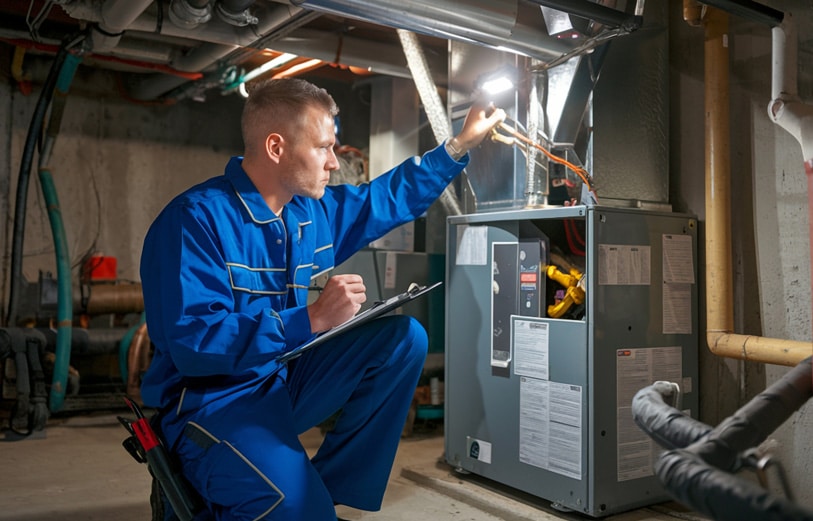Carbon Monoxide: An Increasing Threat in Winter Months

Protect yourself and your family by learning how to prevent carbon monoxide poisoning.
As outside temperatures fall, we close our windows and set our home thermostats higher. However, our efforts to warm our homes may also increase our risk of carbon monoxide (CO) exposure and poisoning.
CO exposure sends more than 100,000 people to hospital emergency departments yearly. More than 14,000 of those require hospitalization. Sadly, more than 400 people die in the U.S. annually from accidental CO poisoning.
How is Carbon Monoxide Produced?
CO is a gas contained in the fumes produced by fuel-burning machines and appliances. Examples include non-electric furnaces, kerosene heaters, and gas-powered motors.
Other examples include fuel-powered lanterns, gas stoves, and portable generators. Burning charcoal or wood also produces CO.
Why is Carbon Monoxide Hazardous?
Carbon monoxide levels rise in an improperly ventilated area. When they do, it can become life-threatening for humans and animals. The problem with CO is that you can’t smell, taste, or see it. So, you don’t realize when you’re inhaling it.
Everyone is susceptible to CO poisoning. However, infants, children, senior citizens, and those with respiratory problems are especially vulnerable.
What Are the Symptoms of Carbon Monoxide Poisoning?
Low-level CO poisoning symptoms include headaches, dizziness, confusion, and drowsiness. High levels of CO can cause breathing and vision impairments. Prolonged exposure at high levels can cause reduced brain function, loss of consciousness, and death.
How Can You Protect Yourself and Your Family?
Carbon monoxide poisoning is highly preventable. Follow these precautions to lower your risk of CO exposure.
- Install CO detectors anywhere you use fuel-burning appliances in your home. Place CO detectors on each level of your home and outside separate sleeping areas.
- Test CO detectors periodically to make sure they are working correctly. Change the batteries in these detectors every six months.
- Have any fuel-burning systems in your home serviced yearly by a qualified technician. These include your heating system and water heater. They also include any other gas, oil, or coal-burning appliances.
- Ensure your home is adequately ventilated. Install and use exhaust fans over gas appliances. Check and clean vents and flues regularly. Blocked ventilation lines can cause CO to build up in your house.
- Never leave a vehicle or fuel-burning engine running in an enclosed or partially enclosed space. This is true even in a garage.
- Do not operate a motor vehicle, generator, pressure washer, or gasoline-powered engine less than 20 feet from an open window, door, or vent. Fumes from the engine can vent into an enclosed area.
- Never use a fuel-burning grill, hibachi, fuel-powered lantern, or portable camping stove inside a home, tent, camper, or garage. This is true even if the windows are open.
- Have a safe backup plan for providing heat in your home. Gas stoves and ovens are not safe alternative heat sources.
- Use fuel-burning appliances and motors only in areas with adequate ventilation and a fresh air source.
What to Do if Your CO Alarm Goes Off?
Make sure everyone exits your house or apartment quickly if your CO alarm sounds. Once you are safely outside in an area with fresh air, call 911 or your local emergency number. Only re-enter your home after a trained professional resolves the problem.
See a doctor immediately if you're potentially exposed to carbon monoxide. You should seek care even if you don't feel symptoms because CO can remain in the blood.
Stay Safe this Winter
Carbon monoxide poisoning is a silent, deadly threat that becomes more prevalent during the colder months. However, you can protect yourself and your loved ones. Understand the risks, recognize the symptoms, and take proactive steps to prevent CO exposure.
Don’t wait until it’s too late. Install CO detectors, maintain your appliances, and ensure proper ventilation in your home. A little preparation now can mean the difference between life and tragedy. Stay informed, stay prepared, and enjoy a warm, safe winter season.

